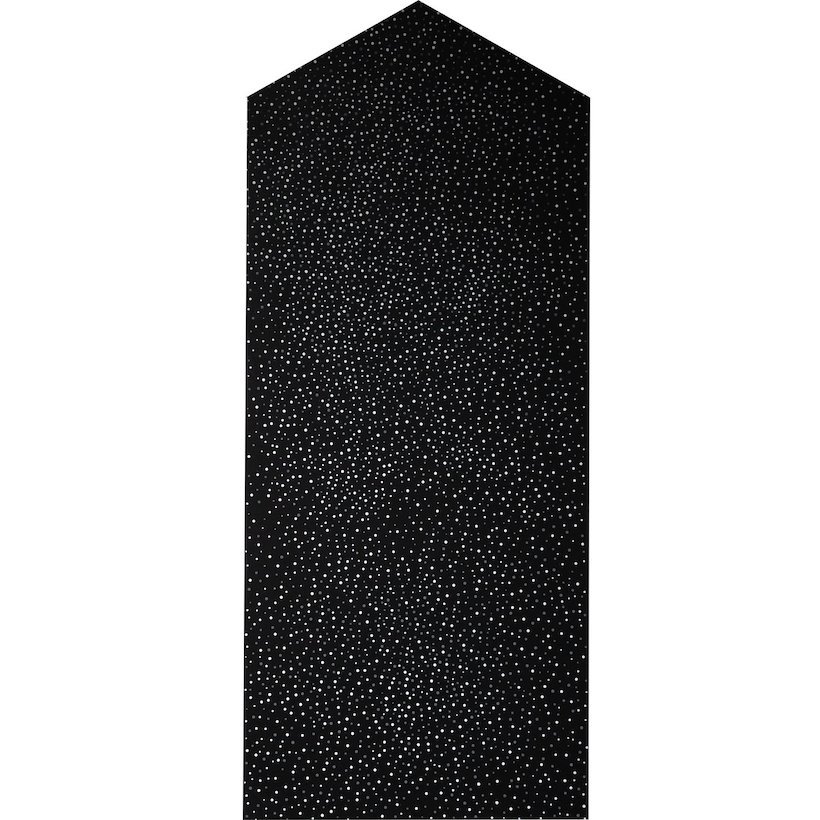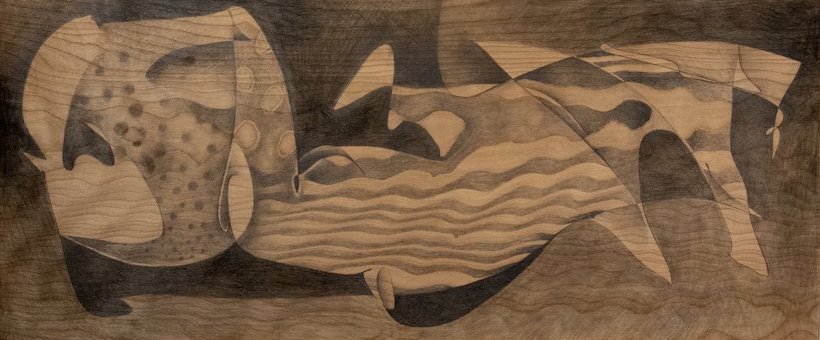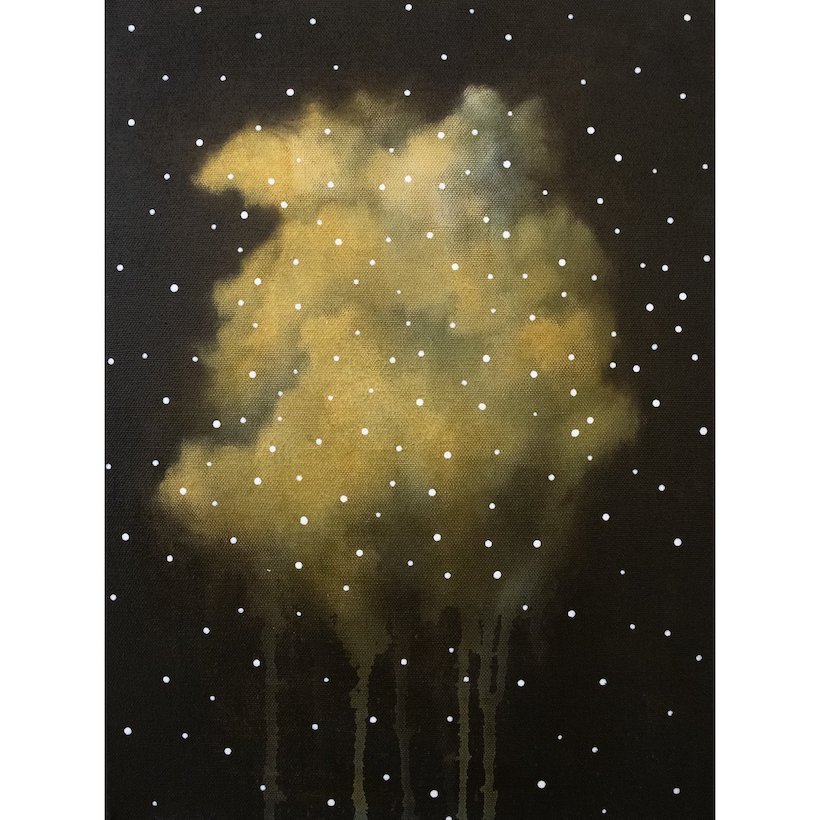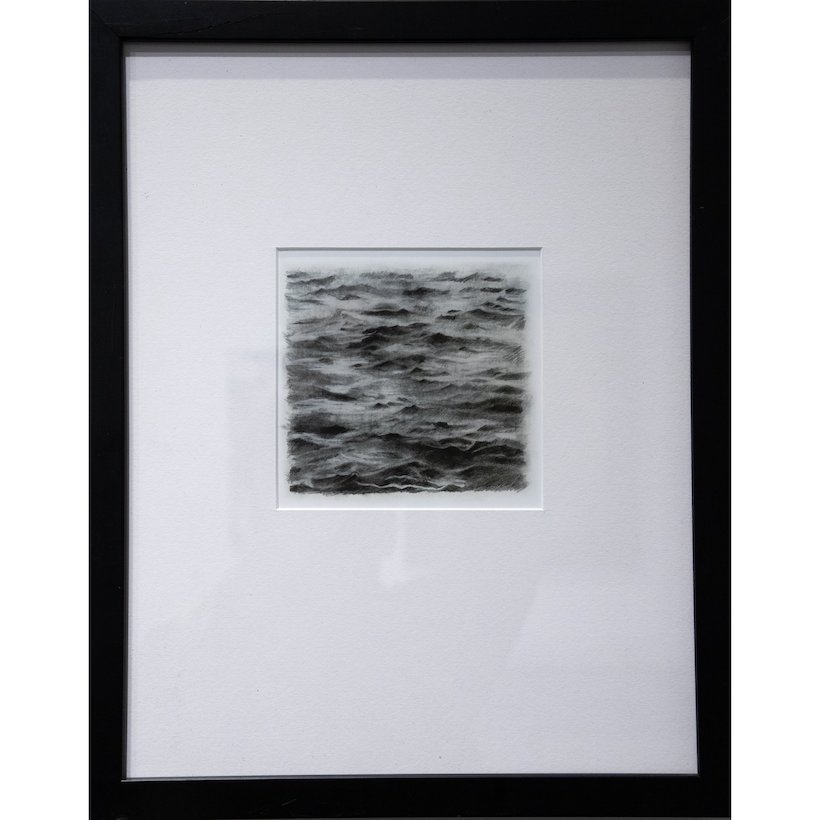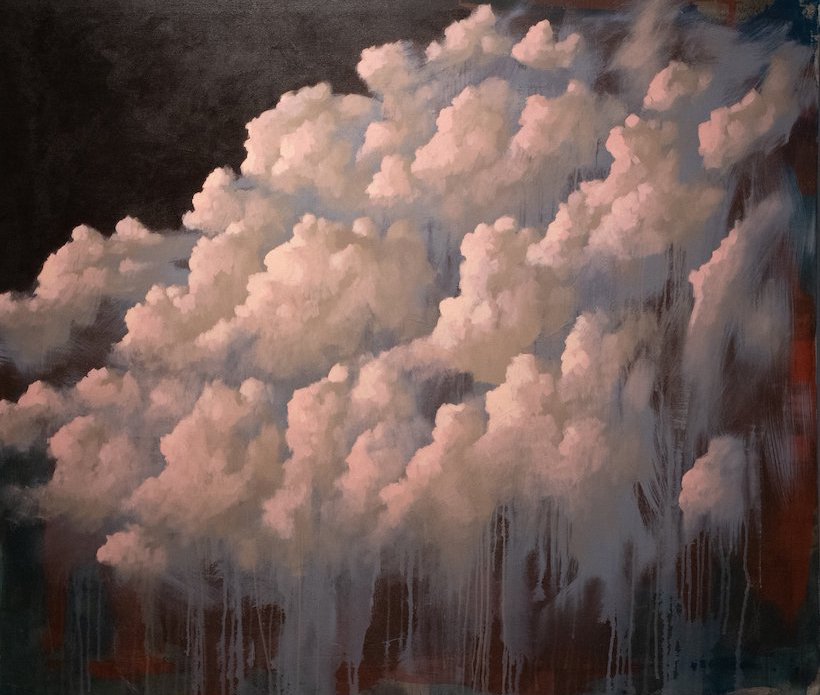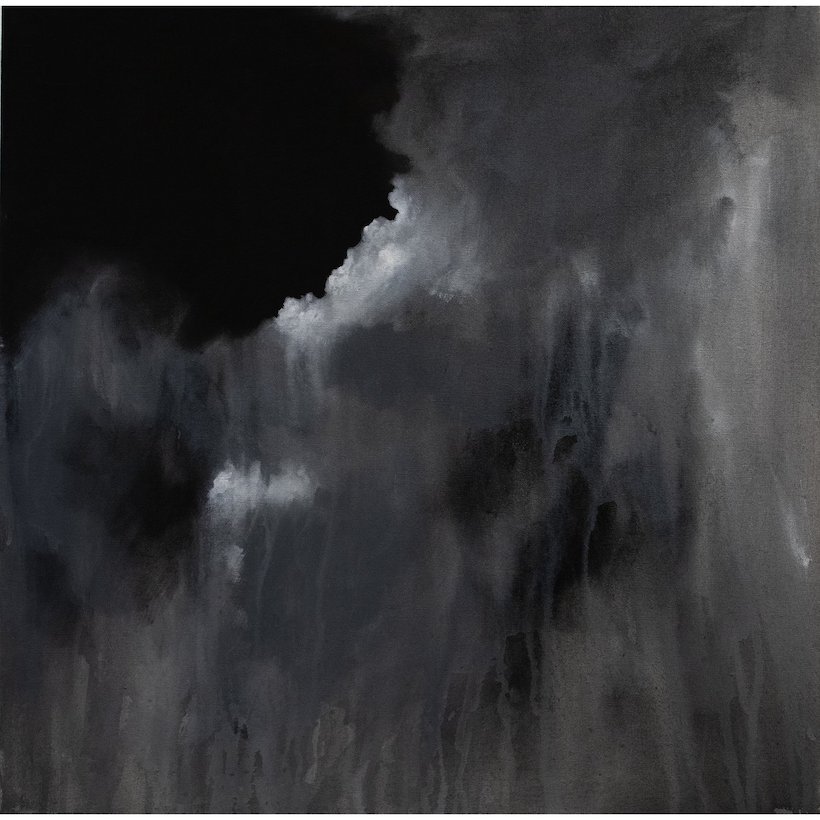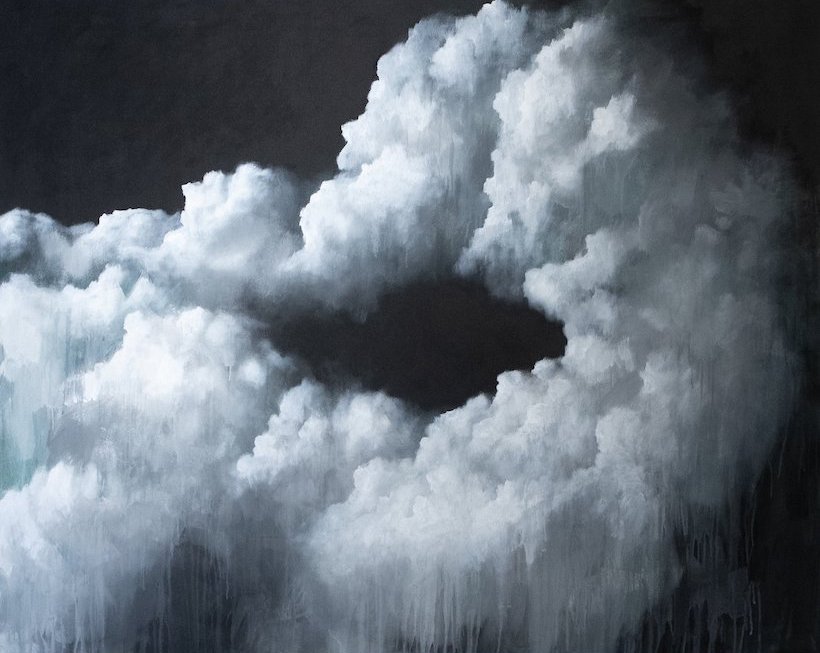Prodigies and Portents
Johnny McKee is a painter of the elements. I mean this literally, as his canvases often look as if they themselves have braved a storm, dripping with acrylic, shellac, and tempera. There’s an industrial quality to the materials he works with; the surfaces of his canvases remind me of leaking tin basins in backyard sheds. For some pieces he sketches in pencil directly onto slats of wood, or peppers a wooden mantelpiece in glistening copper nails. Despite his choice of materials, I would never call his work “rough.” In fact, Johnny McKee is known for an art practice that feels remarkably elegant and meditative. His subject matter certainly has something to do with it. In a McKee exhibit it is typical to see at least a few depictions of his starry skies, a tableaux that has become expected of him. His newest exhibit at the Harrison Center, Prodigies and Portents, is no exception.
Introspectral
Johnny McKee
Acrylic, tempera
24x57”
Between Scylla and Charybdis
Johnny McKee
Pencil on wood
28 x1 2”
With the title of the show, McKee is, as always, making literary analogies. Prodigies and Portents is from a quote by Henry David Thoreau, “as the skies appear to a man, so is his mind. Some see only clouds there; some, prodigies and portents; some rarely look up at all; their heads, like the brutes,' are directed toward Earth.”
Neptune Retrograde
Johnny McKee
Acrylic, tempera, shellac
12x16”
McKee studied photography at the Herron School of Art in the early 90s. In 1996 he had his first exhibit in the Ferris Building, and in the years since, he has become a staple in Indianapolis’s art scene. His practice now focuses mainly on wet media, as he considers painting to be “the most primal way of making art.” For the past eight years, McKee has been at the Harrison Center, where he curates the center’s Underground Gallery– a gallery next door to his studio.
la mar
Johnny McKee
Giclee
12x15”
McKee himself is, for those who know him, introverted and thoughtful. He has an err of seriousness and modesty, with a sensitive attunement to the world around him. His work possesses a kind of cerebral depth– one that would come from someone comfortable with silence. He often imagines his work in interior spaces as he is creating. In this way, Johnny McKee’s art is meant to be lived with. His paintings in particular have become favorites for interior designers and individuals looking for work to bring into their personal spaces.
Red Sky (night)
Johnny McKee
Acrylic
56x48”
Here is something interesting to note about this show– there are no people. In fact, McKee does not often depict figures in his work at all. When he does, he often excavates photographs of families, images that bear a sense of history or loss. Otherwise, his works are silent, and without subject. There is something Cartesian about this. It is easy to feel very alone in his work. This may have something to do with the fact that McKee has created scenes in which we would, in our own lives, probably ponder our own existence in privacy– like when standing out under a huge night sky, looking out across a sea, or suddenly being struck with the weight and size of clouds passing by. In this way it is like his pieces are POVs, moments of aloneness in which we, like the painter, have taken some time away for ourselves to just think.
Diminishing
Johnny McKee
Acrylic
24x24”
I often have to remind myself that Johnny McKee primarily depicts nature. I would certainly never group him with any of his contemporaries who are doing landscape painting. I think this speaks to something very unique about his practice– that he has discovered a way to use depictions of natural phenomena in purely symbolic ways. I like to use the term “mindscapes” for his pieces. Always, there is an assumption that some deeper conversation is happening behind these works– that the artist is voicing a particular inward question or struggle.
Clouds Over Margaret's Farm
Johnny McKee
Acrylic
20x20”
Prodigies and Portents is, as typical for McKee, a show that is above all else, quiet, and brimming with intentionality, practice, and reflection. There is a sense of mystery to the show, but it appears that whatever mystery McKee is getting at is something that he would prefer to ponder rather than interrogate. He gives space for contemplation, for standing back and looking at the rolling clouds and black night skies.
Surrender to a Westward Wind
Johnny McKee
Acrylic
62x50
See Prodigies and Portents in the Harrison Gallery throughout the month of January.

